
Catalog Number 51350-18
AquaTrend
®
Interface
Model 51200 – AquaTrend
Model 51350 – AquaTrend/SOM
Model51400–PortableAquaTrend
Instrument Manual
© Hach Company, 2001, 2002. All rights reserved. Printed in the U.S.A.
11/02 6ed

Page 2
Table of Contents
51350-18TOC.fm
Table of Contents
Safety Precautions.................................................................................................................................................... 5
Specifications............................................................................................................................................................ 6
Operation ............................................................................................................................................................... 7
Section 1 General Description.......................................................................................................................... 9
1.1 Introduction ......................................................................................................................................................... 9
1.2 Using This Manual .............................................................................................................................................. 9
1.3 Unpacking the AquaTrend Interface.................................................................................................................. 10
1.3.1 Optional Equipment................................................................................................................................. 11
1.4 Instrument Description...................................................................................................................................... 11
1.4.1 Operating Environment............................................................................................................................ 11
1.4.2 AquaTrend Interface Keypad Description ................................................................................................ 12
1.4.3 AquaTrend Interface Display Description................................................................................................. 13
1.5 AquaTrend Interface Menu Organization .......................................................................................................... 16
1.5.1 Alarm Log................................................................................................................................................ 16
1.5.2 AquaTrend Interface Menu ...................................................................................................................... 16
1.5.3 Sensor Menu ........................................................................................................................................... 16
1.5.4 Other Device Menu.................................................................................................................................. 16
1.5.5 Network Menu ......................................................................................................................................... 16
Section 2 Aquatrend
®
Interface Network..................................................................................................... 17
2.1 Network Description.......................................................................................................................................... 17
2.2 Device Descriptions .......................................................................................................................................... 18
2.2.1 AquaTrend Interface Module.................................................................................................................... 18
2.2.2 AquaTrend/SOM with Integrated Signal Output Module.......................................................................... 18
2.2.3 Portable AquaTrend Interface Module ..................................................................................................... 19
2.2.4 Sensor..................................................................................................................................................... 19
2.2.5 Signal Output Module (SOM) .................................................................................................................. 19
2.2.6 Signal Input Module................................................................................................................................. 19
2.2.7 Serial I/O Module (SIO)........................................................................................................................... 19
2.2.8 Digital Display Module (DDM).................................................................................................................. 20
2.2.9 Repeater Module..................................................................................................................................... 20
2.3 Network Design................................................................................................................................................. 20
Section 3 Initial AquaTrend Setup ................................................................................................................. 23
3.1 Identifying the Master AquaTrend ..................................................................................................................... 23
3.1.1 Adding Remote AquaTrend Interfaces to the Network............................................................................. 23
3.2 Language Setting.............................................................................................................................................. 24
3.3 Time/Date Setting ............................................................................................................................................. 24
3.3.1 Setting the Time ...................................................................................................................................... 24
3.3.2 Setting the Date....................................................................................................................................... 25
3.3.3 Changing the Date Format ...................................................................................................................... 25
3.3.4 Setting the Correct Day of the Week....................................................................................................... 25
3.4 Network Setup .................................................................................................................................................. 26
3.4.1 Single Sensor System ............................................................................................................................. 26
3.4.2 Adding a Device to the Network .............................................................................................................. 26
3.4.3 Removing or Replacing a Device ............................................................................................................28
3.4.3.1 Removing a Device from the Network ........................................................................................ 28
3.4.3.2 Replacing a Device on the Network............................................................................................ 29
3.4.4 Attaching a Measurement to a Channel .................................................................................................. 30
3.4.5 Detaching a Measurement from a Channel............................................................................................. 30

Table of Contents
Page 3
51350-18TOC.fm Table of Contents
3.5 Additional AquaTrend Interface Menu Features................................................................................................ 31
3.5.1 Display Setup........................................................................................................................................... 31
3.5.1.1 Contrast Adjustment ................................................................................................................... 31
3.5.1.2 Flash Backlight on Alarm............................................................................................................ 32
3.5.2 Channel Graph Time Settings ................................................................................................................. 32
3.5.2.1 Setting the Graph Time (x-axis).................................................................................................. 32
3.5.2.2 Scaling the Graph Y-axis............................................................................................................ 32
3.6 Display Setup.................................................................................................................................................... 33
3.7 Edit Name ......................................................................................................................................................... 33
3.8 Security Setup................................................................................................................................................... 34
3.8.1 Setting the Password............................................................................................................................... 34
3.8.2 Setting the Security Level........................................................................................................................ 35
3.8.2.1 Temporary Unlock ...................................................................................................................... 36
3.9 Additional Network Menu Features................................................................................................................... 36
3.9.1 Review Net Connections ......................................................................................................................... 36
3.9.1.1 List Network Devices .................................................................................................................. 37
3.9.1.2 Displaying Alarm to Relay Connection Information..................................................................... 37
3.9.1.3 Displaying Recorder to Analog Out Information ......................................................................... 38
3.9.1.4 Sensor to Display........................................................................................................................ 38
3.9.1.5 Print Network Image ................................................................................................................... 39
3.10 Print Data Log................................................................................................................................................. 39
3.11 External Network Manager ............................................................................................................................. 40
3.12 Restore Net Connections................................................................................................................................ 41
Section 4 Alarms, Relays, and Recorders ................................................................................................... 43
4.1 Alarm to Relay Connections.............................................................................................................................. 43
4.1.1 Setting Alarm Parameters ....................................................................................................................... 43
4.1.2 Attaching an Alarm to a Relay................................................................................................................. 43
4.1.3 Detaching an Alarm from a Relay............................................................................................................ 44
4.1.4 Connecting a Recorder Signal to an Output Device................................................................................ 45
4.1.5 Detaching Recorder from Analog Output ................................................................................................ 46
4.2 Alarm Log.......................................................................................................................................................... 47
Installation and Maintenance.......................................................................................................................... 49
Section 5 Hardware Installation...................................................................................................................... 51
5.1 Mounting Instructions for the AquaTrend
®
Interface ......................................................................................... 51
5.1.1 AquaTrend Interface Pole Mounting......................................................................................................... 53
5.1.2 AquaTrend Interface Wall Mounting......................................................................................................... 53
5.1.3 AquaTrend Interface Panel Mount ........................................................................................................... 55
5.2 Portable AquaTrend Interface Installation and Mounting................................................................................... 57
5.3 AquaTrend Interface Power and Network Connections..................................................................................... 60
5.3.1 AquaTrend Interface with Signal Output Module (SOM) to PS1201 Power Supply Connections............ 60
5.3.2 SOM Recorder Output and Relay Connections....................................................................................... 64
5.3.3 AquaTrend Interface without SOM to PS1201 Power Supply Connection............................................... 64
5.4 Network Termination ......................................................................................................................................... 66
5.4.1 Network Termination at the AquaTrend with SOM or at the SOM ........................................................... 66
5.4.2 Network Termination at the AquaTrend Interface without SOM............................................................... 68
5.5 Interconnecting other Devices on the Network ................................................................................................. 69

Page 4
Table of Contents
51350-18TOC.fm
Table of Contents
Section 6 Maintenance and Troubleshooting ............................................................................................. 71
6.1 Maintenance ..................................................................................................................................................... 71
6.1.1 Cleaning the AquaTrend Interface........................................................................................................... 71
6.2 AquaTrend Interface Diagnostics ...................................................................................................................... 71
6.2.1 Display Test ............................................................................................................................................. 71
6.2.2 Keyboard Test.......................................................................................................................................... 71
6.2.3 Memory Test............................................................................................................................................ 71
6.2.4 Verify Program Checksum....................................................................................................................... 72
6.2.5 Clear Alarm Log....................................................................................................................................... 72
6.2.6 AquaTrend Interface Cold Start ............................................................................................................... 72
6.2.7 Service Menu...........................................................................................................................................73
6.3 Network Diagnostics ......................................................................................................................................... 73
6.3.1 Print Network Image................................................................................................................................ 73
6.3.2 Query Device Status................................................................................................................................ 73
6.3.3 Test for Duplicate or Wrong Node............................................................................................................ 73
6.4 Troubleshooting................................................................................................................................................. 74
Glossary............................................................................................................................................................... 81
General Information........................................................................................................................................... 85
Replacement Parts and Accessories...................................................................................................................... 86
How to Order........................................................................................................................................................... 87
Repair Service ........................................................................................................................................................ 88
Warranty ................................................................................................................................................................. 89
Certification............................................................................................................................................................. 90

Page 6
Specifications
51350-18 specifications.fm
Specifications
Specifications are subject to change without notice.
Sensor input capability Eight
Operating humidity 5 to 95% non-condensing
Operating temperature 0 to 40 °C (32 to 104 °F)
Storage temperature -20 to 60 °C (-4 to 140 °F)
Power requirements External power supply 12 VDC nominal ±25%
(9 to 15 VDC range) with peak to peak ripple to be less than 10% of nominal.
Enclosure NEMA 4X (indoor), IP 66
Display visibility LCD backlit, visible at 10 feet with single reading; visible at 3 feet with multiple
readings.
Clock Real time
Mounting Wall, panel, or pole
Shipping weight AquaTrend
®
Interface or AquaTrend with Signal Output Module (SOM):
4 lb Portable AquaTrend Interface: 3 lb
Outputs (AquaTrend with SOM only) Two current analog outputs; range either 4-20 mA or 0-20 mA (user selectable);
both outputs isolated to 500 VDC; may be trimmed ±20% if needed (via AquaTrend
Interface).
Relays (AquaTrend with SOM only) SPDT 250 VAC, 5A resistive
Communications Echelon
®
fieldbus compatible; utilizes LonTalk
®
protocol. Maximum of 400 meters
between devices with a 500 meter maximum per segment; distances in excess of
500 meters require a repeater. Up to 3 repeaters can be used for a total network
length of 2000 meters.
Data logging capability 1 hour log (1 min. intervals), 30 day log (15 min. intervals)
AquaTrend Interface and AquaTrend/SOM
Capable of Master or Remote operation; the Master AquaTrend Interface is capable
of communicating with 34 Hach devices including:
8 sensors and/or analyzers
8 Signal Output Modules (SOM)
8 Digital Display Modules (DDM) or 8 Portable AquaTrend Interfaces
8 Remote AquaTrend Interfaces
2 Serial I/O Modules (SIO)
Function Network configuration, system setup, sensor calibration, data logging
Accessories Network terminator provided on the Signal Output Module (SOM) board or the
AquaTrend Interface. One required per network.

Page 7
51350-18 operation stopper.fm Operation
Operation

Page 9
51350-18 general description.fm General Description
Section 1 General Description
Read this section of the manual to determine the appropriate system
configuration for your operation, and to familiarize yourself with basic
operating instructions before installing the AquaTrend
®
Interface.
A Glossary of terms is provided on page 81 to help you understand the
AquaTrend Network.
1.1 Introduction
Hach’s AquaTrend Interface network system is designed to meet the needs of
small and large water analysis facilities alike. Unlike using a dedicated
controller for every instrument, the AquaTrend Interface network system uses
a single AquaTrend Module to interface a variety of devices. This enables
customization of systems to meet a variety of analytical testing needs. The
AquaTrend Interface network system utilizes a digital fieldbus communication
protocol called LonWorks to perform network operations and data
management tasks. Every device on an AquaTrend Interface network must be
identifiable in order to communicate with other AquaTrend Interface
network devices.
An AquaTrend Interface network system is built by adding an AquaTrend
Module to a sensor with a power supply and any other Hach peripheral
devices. Power and network connections are required for all AquaTrend
Interface devices operating on the network. After physically installing the
devices, you must add each device to the AquaTrend Interface network via the
network menus in the Master AquaTrend Interface. After adding all devices to
the network, you must designate which devices communicate with one
another. For example, once a sensor is attached to an AquaTrend Interface,
you must instruct the sensor to attach its reading to a designated AquaTrend
Interface display channel. Because many underlying network connections
occur when performing network operations, it is important to have all existing
devices on the network powered and operating normally when network
operations are conducted. Careful attention to network management
operations and the interconnection of devices will ensure successful operation
of the AquaTrend Interface network system.
1.2 Using This Manual
This manual includes setup and operating instructions for AquaTrend
Interface, AquaTrend/SOM with integrated Signal Output Module, and
Portable AquaTrend Interface. If you are installing an AquaTrend/SOM and
want to include relay and analog output connections, see the Signal Output
Module (SOM) manual for information on making electrical connections.
Once you have gathered the necessary information to set up the AquaTrend
Interface and related sensors, read all instructions and warnings in Section 5
then proceed with the installation.
After making electrical and mechanical adjustments, read Section 2 to decide
which devices to include on the network. Then read and follow instructions in
Section 3 to set up communications between the AquaTrend Interface and
other network devices.
Figure 1 illustrates the basic installation sequence for all AquaTrend Interface
Network devices, except the PS1201 Power Supply, and includes references
to sections of this manual where instructions can be found.

Page 10
Unpacking the AquaTrend Interface
51350-18 general description.fm
Section 1
Figure 1 General Installation Information
1.3 Unpacking the AquaTrend Interface
After opening the packing carton, remove the insulating foam and identify the
device you have received as an AquaTrend Interface, AquaTrend/SOM, or
Portable AquaTrend Interface. The AquaTrend Interface and AquaTrend/SOM
cartons contain the items listed in Table 1, and the Portable AquaTrend
Interface carton contains the items listed in Table 2. Remove the items from
the carton and verify that no visible damage has occurred during shipment.
Contact Hach Customer Service at 1-800-227-4224 if any items are missing
or damaged.
Refer to Safety Precautions on page 5 and to the sections referenced on that page.
Section 5 of this manual.
See the Quick Reference Guide and section 3.1.1 on page 23 of this manual.
Section 3 and Section 4
of this manual.
Table 1 Items Packaged with AquaTrend Interface and AquaTrend/SOM
Item Catalog Number
AquaTrend Interface or AquaTrend/SOM 51200-60 or 51350-60
Bracket, Wall Mount 51409-00
Cable Termination Kit 52156-00
Instruction Manual 51350-18
Table 2 Items Packaged with Portable AquaTrend Interface
Item Catalog Number
Portable AquaTrend Interface with cable assembly 51400-60
Bracket, Wall Mount 51405-00
Instruction Manual 51350-18

Section 1
Page 11
51350-18 general description.fm Instrument Description
1.3.1 Optional Equipment
Additional items and devices can be obtained to expand the AquaTrend
Interface network system. Some of these items are shown below. A more
detailed description of network devices and network capabilities can be found
in Section 2.
Network Devices
• Serial I/O Module (SIO)
• Signal Output Module (SOM)
• Signal Input Module (SIM)
• Digital Display Module (DDM)
• AquaTrend Interface, AquaTrend/SOM, and Portable AquaTrend
Interface
• Sensors, including 1720D Turbidimeter
Other Equipment
• PS1201 Power Supply
• Floor stand
• U-bolts for floor stand or pole mounting
• Network repeater
• Cable
1.4 Instrument Description
The AquaTrend Interface provides a link between sensors and communication
devices. This networked system provides simplified use of multiple
instruments and requires fewer wiring configurations than systems without a
single digital wiring bus.
The AquaTrend Interface is available in three different physical configurations:
• AquaTrend Interface
• AquaTrend Interface with SOM
• Portable AquaTrend Interface
See section 2.2, Device Descriptions on page 18 for additional information on
the different configurations.
1.4.1 Operating Environment
Place the AquaTrend Interface in an accessible location, where you can easily
see the display and operate the keypad. The backlit display is visible at 3 ft.
with multiple readings and at 10 ft. with single reading.
The AquaTrend Interface is designed to operate from 0 to 40 °C (32 to 104 °F)
and 5 to 95% relative humidity, non-condensing. The water-tight design meets
NEMA 4X (indoor) and IEC 529 IP66 enclosure requirements.

Page 12
Instrument Description
51350-18 general description.fm
Section 1
1.4.2 AquaTrend Interface Keypad Description
The AquaTrend Interface keypad is designed for straightforward
navigation through the AquaTrend Interface menus. The keypad contains four
arrow keys, a DISPLAY key, a MENU key, an EXIT key, and an ENTER key.
See Figure 2.
Figure 2 AquaTrend Interface Keypad
The arrow icons and their positions in the arrow field in the top right corner of
the display (item 7 on Figure 4) indicates the active arrow keys. For example,
if three arrow icons are present in the arrow field, pointing up, down, and right,
then the up, down, and right arrow keys can be used while viewing that
screen. Figure 3 shows examples of the screen categories with summaries of
the arrow key functions for each screen category.
Table 3 AquaTrend Interface Key Functions
Number Key Function of Keys
1
Allows you to navigate through the various menus, to change settings, and to move the cursor when
observing graph data.
Table 4 summarizes the functions of the arrow keys in each menu view.
2
Displays active data in numeric or graphical format.
Pressing the DISPLAY key toggles between data presented in numerical form and graphical form.
3 Displays the main menu from any menu level or from the data display.
4
From the Main Menu, pressing the EXIT key provides access to the data display screen.
From any other menu level, press the EXIT key to display the previous menu screen.
The EXIT key can also be used to abandon any alphanumeric entry or selection process.
5 Press while in any menu to accept menu options and confirm entries.
DISPLAY
DISPLAY
MENU
MENU
EXIT
EXIT
ENTER
ENTER
1
2
4
5
3

Section 1
Page 13
51350-18 general description.fm Instrument Description
1.4.3 AquaTrend Interface Display Description
Press the DISPLAY key to alternate between displaying the data in numeric
and graphical mode.
• Viewing data in numeric mode allows you to display from one to eight
measurements at the same time. When additional measurements are
shown on the screen, less information is displayed for those
measurements.
• Viewing data in graphical mode allows you to see a history of sensor
readings over the last 2 hours, 8 hours, 30 hours, 7 days, or 30 days,
depending on the graph time base selected. However, the AquaTrend
Interface displays data for only one channel at a time in the graphic mode.
For details on selecting the number of numeric channels of data shown and
the graph time base, see section 3.5.1 and section 3.5.2.
Press the MENU key to return to the Main Menu at any time. To return to data
display mode, press either the EXIT or DISPLAY keys.
AquaTrend Interface screens appear in several different formats.
Sensor measurements are attached to separate channels, labeled A-P,
on the AquaTrend Interface. Refer to Figure 4 and Figure 5 for descriptions
of each field.
Figure 3 AquaTrend Interface Display Categories
Table 4 Arrow Key Functions
Screen Category Function
1. Menu Screen Move the pointer to next (down) or previous (up) item.
For menus no longer than one page, the pointer will loop around from the bottom to the top or
from the top to the bottom.
For multiple-page menus, the pointer will move to the next (down) or previous (up) page.
2. Numeric Data Display
Screen (1 to 8 numeric
readings)
Left and Right Arrow: Changes the number of channels shown.
Press the Right Arrow to increase the number of channels or press the Left Arrow to decrease
the number of channels.
Up and Down Arrow: changes the active channel designation.
3. Graph Display Screen Up: displays preceding channel graph.
Down: displays next channel graph.
Left and Right Arrow: moves curser if it is enabled.
If not enabled, changes the graph time base.
4. Pop-up Entry Screen Increment (up) and decrement (down) currently highlighted character.
Move highlight to next (right) or preceding (left) character. Loop around at either end.
1. Menu Screen 2. Numeric Data
Display Screen
3. Graph Display Screen 4. Pop-up Entry Screen

Page 14
Instrument Description
51350-18 general description.fm
Section 1
Figure 4 AquaTrend Interface Menu and Numeric Data Display Fields
Table 5 AquaTrend Interface Menu and Numeric Data Display Fields
Number Field Information Shown in Display Field
1 Status Bar
Numeric Data display: shows DISPLAY DATA
Main menu: shows MAIN MENU
Lower menus: shows top level menu (main menu item)
2 Text/Data Numeric data (1- 8 channels), graphical data, menus, and pop up boxes appear here.
3 Date Current date
4Alarms
Numbers that appear here, 1 through 8, correspond to the sensor with active alarms. If “N”
appears in this field, a Network alarm is active. If no indicators appear in this field, no system
alarm is active. See section 4.2 on page 47 for information on reviewing alarms.
5
Security Icon When displayed, indicates a security level of Partial or Total
Hourglass Icon
When displayed, indicates the datalog is completing a change.
The keyboard buffer is cleared when the icon disappears.
6 Time Current time displayed as military time (24 hour clock).
7
Navigation
Arrow
Direction of these arrow icons correspond to active arrow keys for each screen.

Section 1
Page 15
51350-18 general description.fm Instrument Description
Figure 5 AquaTrend Interface Graph Fields
Table 6 Graph Field Descriptions
Number Field Information Shown in Graph Field
1 Status Bar Shows REVIEW MEASUREMENTS
2 Channel assignment Channel number of the measurement shown in the graph
3 Graph Data — Y-axis upper limit Upper numeric limit of trend graph data. (Ymax)
4 Cursor Y-data Y value of data at cursor position
5 Units/Species
Units and chemical form (where appropriate) of the measurement on the
displayed channel
6 Graph data — Y-axis lower limit Lower numeric limit of trend graph data (Y-min)
7 Graph time — X-axis lower limit Lower time limit (oldest data).
If data is being reviewed in the
24 hour or 30 day mode, this field is
replaced with the date.
8 Cursor Time/Date Time or date value of data at cursor position
9 Graph time — X-axis upper limit Current time (latest data).
If data is being reviewed in the
24 hour or 30 day mode, this field is
replaced with the date.
10 Graph Cursor Retrieves value of data at cursor position
11 Graph Area
Graph of 60 minutes, 8 hours, 24 hours, 7 days, or 30 days of data.
These settings are selectable in the DISPLAY SETUP menu (section 3.5.2 on
page 32).
12 Sensor name
Depending on the sensor type and configuration, the display shows
measurement name or the sensor location, or a combination of both.
13 Units and chemical form Units and chemical form of the measurement on the channel
14 Current Data Most recent measurement (same as numeric display)
Alarms
AquaTrend™
14
13
12
11
10
987
6
5
4
3
2
1

Page 16
AquaTrend Interface Menu Organization
51350-18 general description.fm
Section 1
1.5 AquaTrend Interface Menu Organization
The AquaTrend Interface main menu can be accessed at any time by
pressing the MENU key. The main menu categories are described in the
following sections.
1.5.1 Alarm Log
The alarm log menu provides a historical account of sensor specific alarm
information as well as AquaTrend Interface network alarm information.
1.5.2 AquaTrend Interface Menu
The AquaTrend Interface menu provides access to AquaTrend Interface
display and status settings. Display settings, language selection, time and
date settings, and security settings all reside in the AquaTrend Interface
menu. Access this menu to change the way information appears on the
AquaTrend Interface screen.
1.5.3 Sensor Menu
The sensor menu contains all sensor specific information including
calibration, alarm and recorder setup, measurement options, and sensor
diagnostics. The contents of this menu will change based on the sensor you
are working with. Since all of these menu items are stored within the sensor,
they are designed to be sensor specific. Access this menu to change sensor
settings or information.
1.5.4 Other Device Menu
The other device menu contains information specific to accessory devices
that are not sensors. Such examples include Signal Output Modules, Serial
I/O Modules and Digital Display Modules. Access this menu to change
settings or information for non-sensor devices.
1.5.5 Network Menu
The network menu contains information specific to performing network
operations. This includes adding, removing, and replacing devices on the
network. In addition, it contains menu items needed to establish
communications between devices. For example, once a sensor and Digital
Display Module are added to the system via the AquaTrend Interface, you
must instruct the sensor to attach its reading to the Digital Display Module.
Because many underlying network connections occur when performing
network operations, it is important to have all existing devices on the network
powered and operating normally when network operations are conducted.
Section 3 and Section 4 of this manual describe how to use these menus
together to build and configure your network.

Page 17
51350-18 Aquatrend Interface Network.fm Aquatrend
®
Interface Network
Section 2 Aquatrend
®
Interface Network
2.1 Network Description
This section describes requirements and options for setting up the AquaTrend
Interface Network System. A “network” is the connection of one or more
devices (of which at least one is a sensor) to a Master AquaTrend Interface.
This Master AquaTrend Interface serves as the network control panel.
Devices can include Signal Output Modules (SOM), Digital Display Modules
(DDM), Serial I/O Modules (SIO), Remote AquaTrend Interfaces and
Portable AquaTrend Interfaces.
Figure 6 shows an example of a single-sensor AquaTrend Interface Network
System. An example of a multi-sensor system is shown in Figure 7.
Figure 6 Single-Sensor AquaTrend Interface Network
Each sensor (i.e., the 1720D Turbidimeter) manual provides instructions for
setup of the single-sensor network. Each of the other device manuals,
(AquaTrend/SOM, AquaTrend Interface, Digital Display Module, Serial I/O
Module, Signal Input Module and Signal Output Module) provides setup
instructions for their components.
Section 2.3
describes the maximum
number of devices that can be managed by one Master AquaTrend Interface
on a system.
EXIT
ENTER
MENU
DISPLAY
E
X
I
T
E
N
T
E
R
M
E
N
U
D
I
S
P
L
A
Y
Power Supply 12V DC
Network Connection Module
DIGITAL
DISPLAY MODULE
CONFIGURE
ON
OFF
1720D
AC Power
4-20mA Outputs
RS232 Computer or Printer Interface
Relays
115 / 230 VAC
Power In
Either the
DDM or the
Portable AquaTrend
Customer Supplied
ON/OFF Switch
Spare -
open for
expansion

Page 18
Device Descriptions
51350-18 Aquatrend Interface Network.fm
Section 2
2.2 Device Descriptions
2.2.1 AquaTrend Interface Module
The two primary functions of the AquaTrend Interface are network
management and data display. Network management functions are required
only when performing modifications to the network such as adding or
removing devices. Multiple AquaTrend Interfaces (up to nine) can exist on a
network at any given time. Remote AquaTrend Interfaces serve to display data
from one or more sensors and access sensor menus.
• Master AquaTrend Interface – Acts as the main network data control
center for setup and operation of the network. The network can contain as
many as nine AquaTrend Interfaces but only one can be the Master
AquaTrend Interface. Only through the Master AquaTrend Interface can
network operations be performed.
• Remote AquaTrend Interface – Any AquaTrend Interface on a network
that is not a Portable or Master AquaTrend Interface. Remote AquaTrend
Interfaces can control and monitor all sensors on the network. Remote
AquaTrend Interfaces cannot perform network operations such as adding
and removing devices.
• Portable AquaTrend Interface – Mobile device designed for set up and
calibration of sensors already on the network. Portable AquaTrend
Interfaces can communicate with one sensor at a time and cannot
perform network operations. See section 2.2.3 and 5.2 for more
information about the Portable AquaTrend Interface.
All AquaTrend Interfaces have the capability of functioning as a Master or
Remote however, only the Master AquaTrend Interface is allowed to perform
network management functions. All AquaTrend Interfaces are shipped from
the factory in an undefined (neither Master or Remote) state. When an
individual AquaTrend Interface is defined as the Master, any other AquaTrend
Interface on the network must be defined as a Remote. An AquaTrend
Interface can be redefined (i.e., Remote to Master or Master to Remote);
however, existing network connection information will be lost. After changing a
Remote to a Master AquaTrend Interface, you must rebuild the network and
reestablish communications between devices.
2.2.2 AquaTrend/SOM with Integrated Signal Output Module
The AquaTrend/SOM Module is a combined AquaTrend Interface and SOM in
one enclosure. See section 2.2.1 for information concerning the functions and
options for the AquaTrend Interface portion of the combined AquaTrend/SOM
and section 2.2.5 for more details about the SOM.

Section 2
Page 19
51350-18 Aquatrend Interface Network.fm Device Descriptions
2.2.3 Portable AquaTrend Interface Module
The Portable AquaTrend Interface can access sensor menus for setup and
calibration but cannot perform network management functions. The Portable
AquaTrend Interface communicates directly to the sensor that it is attached to
without interpreting network commands from the Master AquaTrend Interface.
Once a network is configured using a Master AquaTrend Interface, the
Portable AquaTrend Interface can be used to display and log data from that
sensor in the absence of a Master AquaTrend Interface.
2.2.4 Sensor
The sensor, such as the 1720D Turbidimeter (shown at left), is the
device that analyzes the sample. Sensors may or may not contain an
AquaTrend Interface.
2.2.5 Signal Output Module (SOM)
Each SOM provides two relays, each with normally open and normally closed
contacts rated at a maximum of 5A/250 VAC, and two analog outputs,
selectable through the AquaTrend Interface keypad at either 4-20 or 0-20 mA.
Signal Output Module functionality can be provided either in an
AquaTrend/SOM or in a separate Signal Output Module. See the
Signal
Output Module Manual
for detailed information.
2.2.6 Signal Input Module
The Signal Input Module (SIM) is configured as a sensor on the network
system and provides two 4-20mA analog inputs. These inputs can be used to
bring measurements from non-networked sensors into the network. The SIM
allows the user to set the value for zero and full-scale inputs and to define the
measurement names, units, and species. Two configurable setpoint alarms
can be set to trigger relays in a Signal Output Module. Refer to the
Signal
Input Module (SIM) Manual
for additional information.
2.2.7 Serial I/O Module (SIO)
The AquaTrend Interface allows the review of data collected over the last 60
minutes, 24 hours, or 30 days. To download the data to a computer or printer,
a Serial I/O (SIO) Module must be installed. The SIO provides two-way
communication with a computer (PC) or one-way communication with a
printer. Use an SIO to permanently log measurement and diagnostic data to a
printer or computer. See the
Serial I/o Module Manual
for detailed information.

Page 20
Network Design
51350-18 Aquatrend Interface Network.fm
Section 2
2.2.8 Digital Display Module (DDM)
The Digital Display Module (DDM) is an eight-character display that can be
attached to sensors to provide a local digital reading. Once the display is
added to the network and assigned to the sensor by the Master AquaTrend
Interface, it will automatically display data from the sensor. For sensors that
have multiple parameters (measurements), you can choose which parameter
you want to display on the DDM. See the
Digital Display Module Manual
for
detailed information.
2.2.9 Repeater Module
The AquaTrend Repeater module is a physical layer repeater used to extend
the length of the AquaTrend Network by a maximum of 500 meters. A total of
three such devices can be installed on the AquaTrend Network to extend the
total length of the network to 2000 meters.
2.3 Network Design
Based on Wiring Topologies on page 83, determine the appropriate
configuration for your operation by considering the following criteria;
descriptions of each device is given in section 2.2.
Note: All AquaTrend Interfaces on a
system display measurements and
menus, but only the Master
AquaTrend Interface can perform
network operations through the
Network Menu.
The system can contain as many as nine AquaTrend Interfaces but only
one can be the Master AquaTrend Interface. Each AquaTrend Interface
is programmed in an undetermined state when shipped from the factory
and must be designated as a Master or Remote when initially attached to
the network.
If more than one AquaTrend Interface is to be attached to the network,
the Master AquaTrend Interface will be designated before other
AquaTrend Interfaces are added. Additional AquaTrend Interfaces will be
designated as Remotes.
Select the number of PS1201s based on the wattage needed and the
distance between the power supplies and the devices. Each PS1201
Power Supply provides 25 watts. Available devices and their wattages are
listed below and in the PS1201 manual.
If a system larger than 35 nodes is needed, refer to the information on
assigning subnet addresses in Appendix A Use of Subnets on page 75.
Table 7 Maximum Network Capabilities
Device
Number of devices that can be maintained on one
AquaTrend Interface Network
Signal Output Module (SOM) 8
Serial I/O Module (SIO) 2
Digital Display Module (DDM) 8
Sensors (A SIM is seen by the network as a sensor.
Maximum sensors + SIMs = 8)
8
AquaTrend Interface 1 Master, 8 Remotes
Page is loading ...
Page is loading ...
Page is loading ...
Page is loading ...
Page is loading ...
Page is loading ...
Page is loading ...
Page is loading ...
Page is loading ...
Page is loading ...
Page is loading ...
Page is loading ...
Page is loading ...
Page is loading ...
Page is loading ...
Page is loading ...
Page is loading ...
Page is loading ...
Page is loading ...
Page is loading ...
Page is loading ...
Page is loading ...
Page is loading ...
Page is loading ...
Page is loading ...
Page is loading ...
Page is loading ...
Page is loading ...
Page is loading ...
Page is loading ...
Page is loading ...
Page is loading ...
Page is loading ...
Page is loading ...
Page is loading ...
Page is loading ...
Page is loading ...
Page is loading ...
Page is loading ...
Page is loading ...
Page is loading ...
Page is loading ...
Page is loading ...
Page is loading ...
Page is loading ...
Page is loading ...
Page is loading ...
Page is loading ...
Page is loading ...
Page is loading ...
Page is loading ...
Page is loading ...
Page is loading ...
Page is loading ...
Page is loading ...
Page is loading ...
Page is loading ...
Page is loading ...
Page is loading ...
Page is loading ...
Page is loading ...
Page is loading ...
Page is loading ...
Page is loading ...
Page is loading ...
Page is loading ...
Page is loading ...
Page is loading ...
Page is loading ...
Page is loading ...
Page is loading ...
Page is loading ...
Page is loading ...
Page is loading ...
-
 1
1
-
 2
2
-
 3
3
-
 4
4
-
 5
5
-
 6
6
-
 7
7
-
 8
8
-
 9
9
-
 10
10
-
 11
11
-
 12
12
-
 13
13
-
 14
14
-
 15
15
-
 16
16
-
 17
17
-
 18
18
-
 19
19
-
 20
20
-
 21
21
-
 22
22
-
 23
23
-
 24
24
-
 25
25
-
 26
26
-
 27
27
-
 28
28
-
 29
29
-
 30
30
-
 31
31
-
 32
32
-
 33
33
-
 34
34
-
 35
35
-
 36
36
-
 37
37
-
 38
38
-
 39
39
-
 40
40
-
 41
41
-
 42
42
-
 43
43
-
 44
44
-
 45
45
-
 46
46
-
 47
47
-
 48
48
-
 49
49
-
 50
50
-
 51
51
-
 52
52
-
 53
53
-
 54
54
-
 55
55
-
 56
56
-
 57
57
-
 58
58
-
 59
59
-
 60
60
-
 61
61
-
 62
62
-
 63
63
-
 64
64
-
 65
65
-
 66
66
-
 67
67
-
 68
68
-
 69
69
-
 70
70
-
 71
71
-
 72
72
-
 73
73
-
 74
74
-
 75
75
-
 76
76
-
 77
77
-
 78
78
-
 79
79
-
 80
80
-
 81
81
-
 82
82
-
 83
83
-
 84
84
-
 85
85
-
 86
86
-
 87
87
-
 88
88
-
 89
89
-
 90
90
-
 91
91
-
 92
92
-
 93
93
-
 94
94
Hach AquaTrend 51350 Instrument Manual
- Type
- Instrument Manual
- This manual is also suitable for
Ask a question and I''ll find the answer in the document
Finding information in a document is now easier with AI
Related papers
-
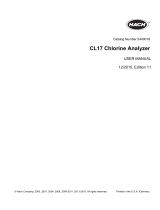 Hach Lange CL17 User manual
Hach Lange CL17 User manual
-
 Hach Lange CL17 Instrument Manual
Hach Lange CL17 Instrument Manual
-
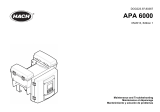 Hach Lange APA 6000 User manual
Hach Lange APA 6000 User manual
-
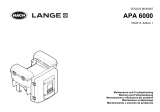 Hach Lange APA 6000 Maintenance And Troubleshooting Manual
Hach Lange APA 6000 Maintenance And Troubleshooting Manual
-
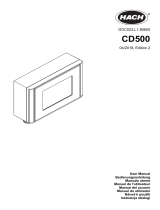 Hach CD500 User manual
Hach CD500 User manual
-
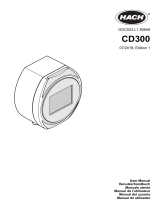 Hach CD300 User manual
Hach CD300 User manual
-
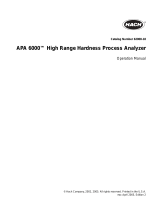 Hach Lange APA 6000 Operating instructions
Hach Lange APA 6000 Operating instructions
-
Hach SC200 User manual
-
 Hach Lange APA 6000 Operating instructions
Hach Lange APA 6000 Operating instructions
-
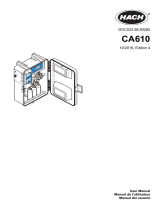 Hach CA610 User manual
Hach CA610 User manual
Other documents
-
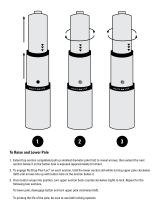 EZPole EZL21B User manual
EZPole EZL21B User manual
-
wtw Turb 2100 Operating instructions
-
Epson ColorPage 8000 Installation guide
-
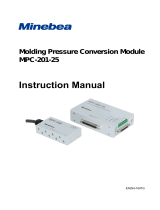 Minebea MPC-201-25 User manual
Minebea MPC-201-25 User manual
-
Detecto EH Floor Scale Operating instructions
-
Carrier DATACOLD 500 T/R User manual
-
wtw Turb 430 IR/T Operating instructions
-
Utax FAX 570 Operating instructions
-
ProMinent TUC 2 Assembly And Operating Instructions Manual
-
Axis F8001 User manual










































































































